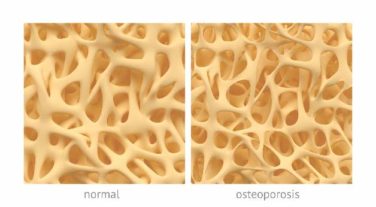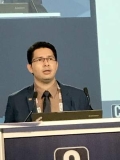Imagine a disease killing nearly 1,500 Americans every day and sending an additional 6,748 people to our nation’s emergency departments on a daily basis.1, 2 Imagine 22.7 million people in our country needing treatment for this disease, and only 2.5 million being able to access lifesaving care.3
Imagine the outrage if, in an unfortunate reminder of the early years of HIV/AIDS, patients were blamed for their disease and received stigma instead of compassion.
In such a drastic context, one might expect academic medical centers and medical schools to be clamoring to train physicians to provide evidence-based prevention, diagnosis, and treatment; researchers lining up to develop new treatments; public health experts developing urgent new approaches; and affected communities advocating for change.
Unfortunately, this is far from a hypothetical scenario. The disease is substance use disorder (SUD), and we are in the midst of an epidemic. Our patients are dying – and we, as internists, should be concerned, prepared, and ready to join the fight.
Alcohol, tobacco, and drug use disorders affect 40 million Americans, or 15.9% of the population – more than heart conditions, diabetes, or cancer – and cost society $559 billion each year.4, 5 Unintentional drug overdose is the leading cause of accidental death in the United States.2
Yet, most primary care physicians do not feel competent diagnosing or treating alcohol and drug use disorders.6, 7 Similarly, a survey of internal medicine residents found a majority felt unprepared to treat SUD and rated the quality of education and training they received in addiction medicine poorly.
I received very little formal education about SUD in my own training and received exposure to addictions primarily through work in a state prison, where I saw firsthand the consequences of untreated addiction and was fortunate to meet a mentor who cared deeply about this disease. However, most medical students are not so fortunate, and inadequate training and limited faculty role models contribute to the lack of physician preparedness to care for patients with SUD.6, 8, 9
Rapid access to effective treatment, particularly to agonist medication treatment for opioid use disorder, is the single greatest intervention we have to stem the tide of deaths. Increased treatment with buprenorphine and methadone was associated with reduced heroin overdose death by 50% in Maryland, and by 79% in France.10, 11
And yet, because of both stigma and a limited number of trained physicians to prescribe, access to these treatments remains limited and wait lists remain long.
As the National Center on Addiction and Substance Abuse at Columbia University, New York, reported, “Most of those who are providing addiction treatment are not medical professionals and are not equipped with the knowledge, skills, or credentials necessary to provide the full range of evidence-based services to address addiction effectively.”4
The good news is that addiction medicine is now a multidisciplinary subspecialty, which has its own specialty board, the American Board of Addiction Medicine (ABAM). The formal process to make addiction medicine a recognized subspecialty within the American Board of Medical Specialties may be completed within the next year. Although there are 27 ABAM Foundation–accredited fellowship programs across the country, the credentialing exam is still open to any licensed physician with at least 1,920 hours over the last 5 years caring for patients at risk for, or with, addiction, and 50 hours of addiction CME.12
Significantly, several years ago, the credentialing committee of ABAM noted that at least 20% of the average internist’s time is spent caring for a patient with addiction or its complications. Thus, many internists will meet the exam’s eligibility requirements. Like me, many of those who become certified by ABAM work in a primary care setting and do their initial training in internal medicine.
Increasing the number of addiction medicine specialists is necessary to reduce the addiction treatment gap, elevate the quality of addiction care available, and work toward reducing stigma.
With other similar chronic diseases, specialty consultation is available. While general internists can and do effectively manage diabetes, cardiovascular disease, and asthma, they appropriately have access to endocrinologists, cardiologists, and pulmonologists.
Drawing again on the comparison to HIV, research has found that physician experience with HIV/AIDS and specialty training improves patient outcomes. Similarly, access to specialty consultation with addiction experts should be an option available for all patients with SUD and the doctors caring for them. Many of us are already providing the care. Getting certified provides an opportunity to consolidate one’s knowledge of addictions.
Science has shown that there is no longer any question about the nature of addiction – it is a chronic disease with genetic vulnerability, pathophysiological changes, and environmental contributors. Continuing to marginalize this illness as a social problem out of the domain of physicians will only worsen the stigmatization of affected patients and increase the deadly impact of this epidemic.
Addiction medicine certification and specialization offer physicians an opportunity to demonstrate excellence and competence in the field, serve as expert consultants for colleagues, and provide patients and families with quality and equitable health care.
It is also a dynamic and exciting field to practice in right now, one in which we can make a significant impact on the nation’s number one public health problem.
Dr. Wakeman is medical director of the Substance Use Disorder Initiative at Massachusetts General Hospital/Harvard Medical School, Boston. She is a diplomate of both the American Board of Internal Medicine and American Board of Addiction Medicine. For more information on the ABAM certification exam, visit www.abam.net .
References
2. CDC. Prescription Drug Overdose in the United States: Fact Sheet. Available online at www.cdc.gov/drugoverdose/index.html.
3. The NSDUH Report : Substance Use and Mental Health Estimates from the 2013 National Survey on Drug Use and Health: Overview of Findings.
4. CASA Columbia. Addiction Medicine: Closing the Gap between Science and Practice. Available online at www.casacolumbia.org/addiction-research/reports/addiction-medicine .
5. NIDA. Addiction Science: From Molecules to Managed Care. July, 2008. Available online at www.drugabuse.gov/publications/addiction-science/introduction .
6. Acad. Med. 2001;76:410-18 .
7. CASA Columbia. Missed Opportunity: National Survey of Primary Care Physicians and Patients on Substance Abuse. April, 2000. Available online at www.casacolumbia.org/addiction-research/reports/national-survey-primary-care-physicians-patients-substance-abuse .
8. Ann. Intern. Med. 2011;154:56-59 .
9. Subst. Abus. 2013;34:363-70 .
10. Am. J. Public Health 2013;103:917-22 .




